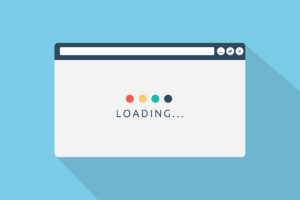 If you’ve ever run a speed test on your website, you’ve probably seen the recommendation to leverage browser caching in order to boost performance. Caching refers to the process of creating static versions “snapshots” of your website’s content – saving and storing the data temporarily – so that the next time a visitor accesses the site, not every single file needs to be requested again from the server.
If you’ve ever run a speed test on your website, you’ve probably seen the recommendation to leverage browser caching in order to boost performance. Caching refers to the process of creating static versions “snapshots” of your website’s content – saving and storing the data temporarily – so that the next time a visitor accesses the site, not every single file needs to be requested again from the server.
The Benefits of Browser Caching in WordPress
Caching is a very important tool for WordPress sites. In WordPress, displaying a page requires back and forth queries sent to and from the database. All these queries can overload the server, especially with large amounts of traffic. With caching, you can reduce the server load by reusing previously generated data or requests such as database queries.
Some of the benefits of caching include:
- Saves a substantial amount of the server’s resource consumption and helps reduce the server load. This can be very helpful if you host your website on a shared hosting environment where other sites are on the server.
- Enhances the speed and performance of your website since cached pages load faster than dynamic database queries.
- Provides a better overall user experience on your website. Users will appreciate a faster loading site as well as possible savings in their bandwidth since static cached pages are smaller in file size compared to dynamic requests.
Types of Caching Protocols
Client-Side Caching
Client-side caching is also known as browser caching for WordPress. Most modern web browsers automatically keep a local cache of the images, HTML, CSS and JavaScript files it has downloaded from a website.
For your WordPress site, a web developer can establish certain caching rules and controls for its contents. If a certain item or content hasn’t changed since it was last downloaded, the browser will use its locally cached version, instead of going back to the server to retrieve it. A client-side cache is created when a web visitor first visits your website and then it works on subsequent visits.
Server-Side Caching
Server-side caching occurs on the hosting server and includes page caching, database query caching, object-based caching and PHP OPcode caching.
Unlike client-side caching, a cache on the server can be built when content is created or edited. As a result, a server cache could come into play even when a visitor browses a site for the first time.
Server-side caching can drastically improve your website performance because displaying a page from cache is much faster.
Object-based caching is a type of server-side caching and it can be very beneficial to WordPress sites. Queries can start to slow down a website if too many are run at one time. An example of a query is a 301 redirect, where you redirect a deleted URL to a new one. With object-based caching, queries that are run on the site are also stored along with the results of those queries. This way the server doesn’t need to reach back to the database the next time that query is run.
WordPress Caching Plugins
A number of both free and premium WordPress caching plugins, such as WP Super Cache and W3 Total Cache, are available to manage various aspects of caching.
These plugins can perform functions like purging a site’s cached data, monitoring the site for updated material while also creating dynamically cached pages that allows for continual updating of selected portions of cached pages.
However, talk with an experienced WordPress developer before installing one of these plugins on your site. A poorly performing caching / performance plugin may actually cause your site to run slower or even malfunction.
Is Caching Always a Good Solution?
While caching can be a useful method for optimizing a website, sometimes issues can arise. There are certain web pages that shouldn’t be cached and your web developer will need to configure and remove these from any caching protocols.
For example, if you have a membership website where visitors are logging into the site, caching can sometimes cause password reset links to not work properly.
Another example would be an e-commerce site that needs to be able to show the number of items in a shopping cart, which is specific to and dynamically generated for each visitor. For these features, an experienced WordPress developer can review and adjust the configuration on your site.
Finally, keep in mind that caching is just one tool that can help optimize your site’s speed and performance. Consider using it in conjunction with other techniques such as image optimization, HTTP compression, minification and more.
If your WordPress site is slow or you have any questions about browser caching in WordPress, reach out to our team.


